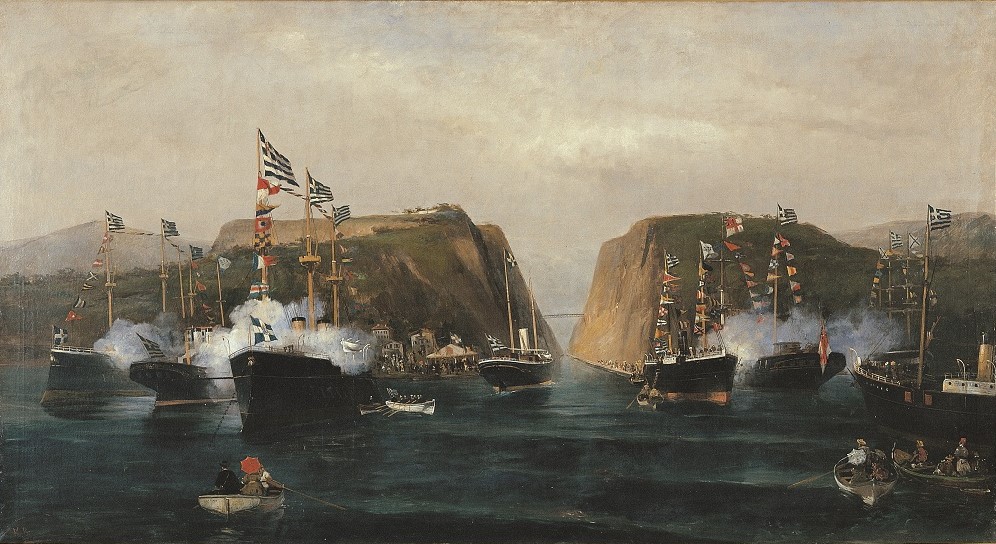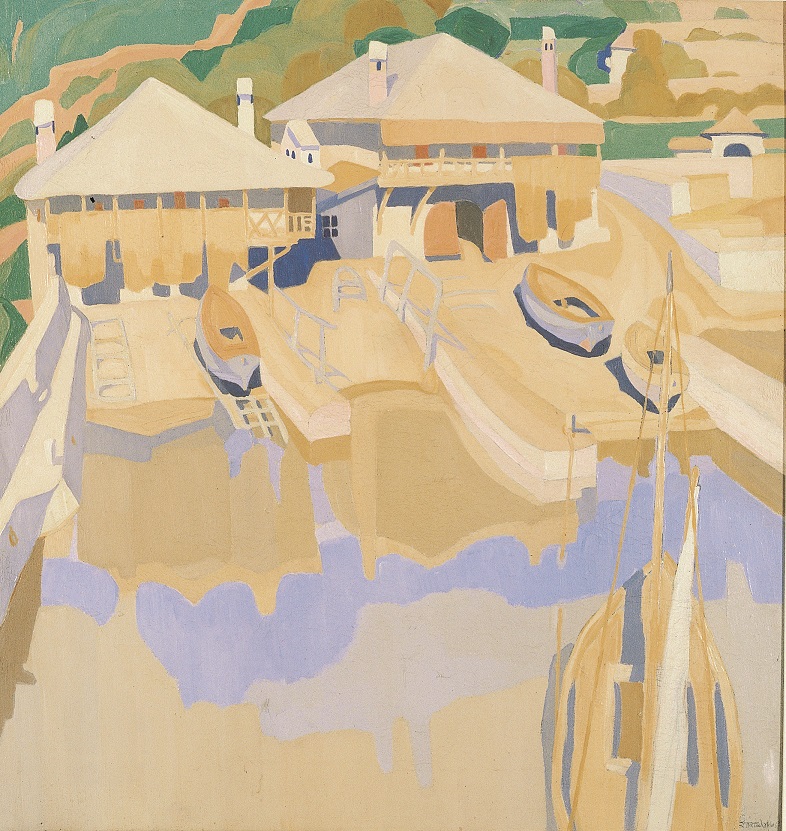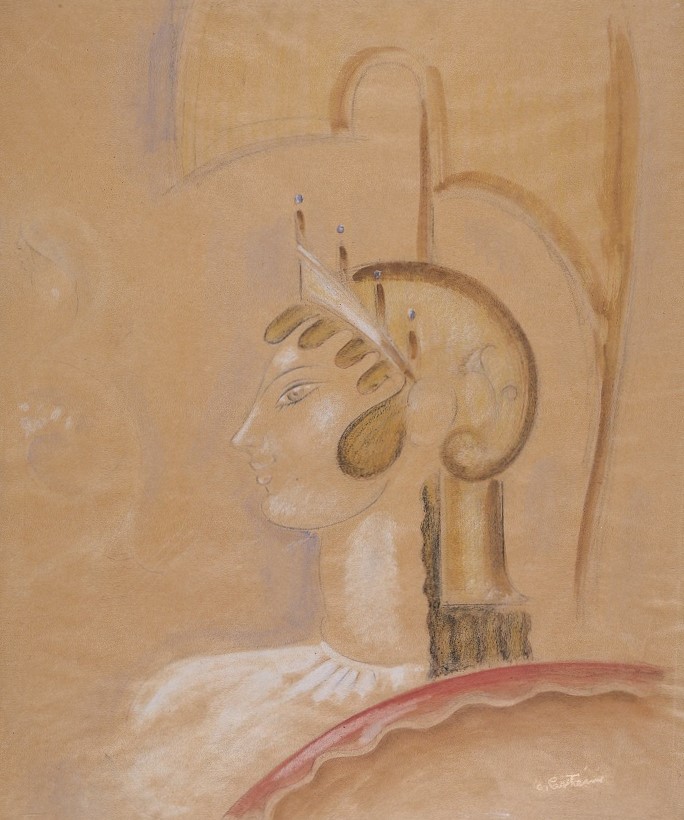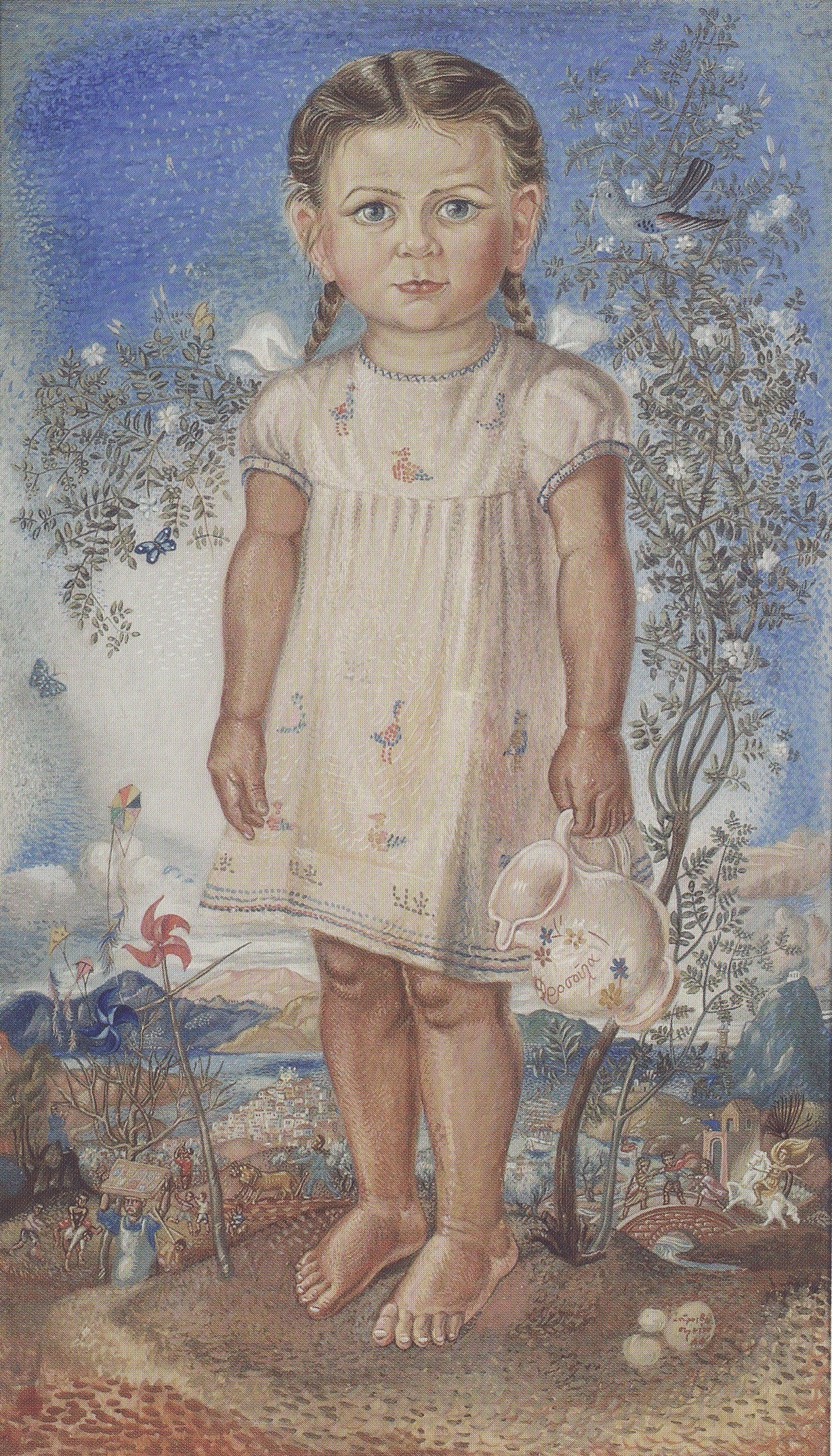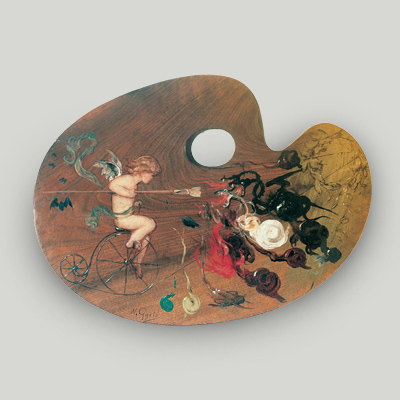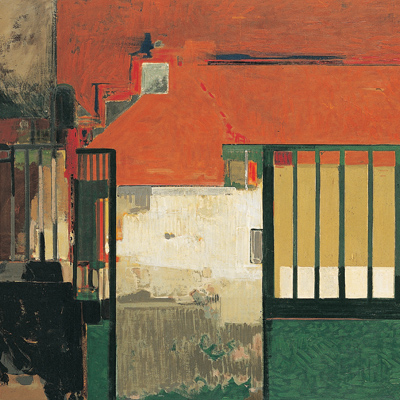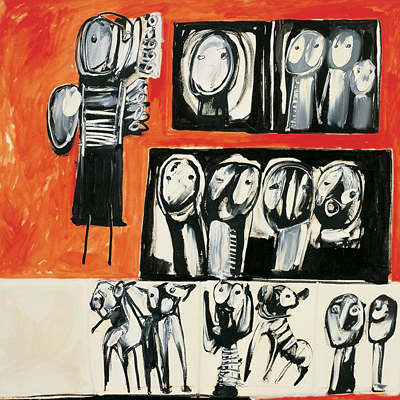Konstantinos Volanakis, The Inauguration of the Corinth Canal
The Inauguration of the Corinth Canal by Konstantinos Volanakis depicts the opening ceremony held for one of the largest public works ever completed in Greece (6 August 1893). The piece is 1 of 3 seascape paintings under the same theme. The main artistic influences of the painter are the Munich School and the impressionist movement.
The 3 variations of the seascape
The painting The Inauguration of the Corinth Canal by Konstantinos Volanakis was most probably completed right after the official opening of the Canal, which took place on 6 August 1893.
The painting is the 3rd variation on the same theme. It is slightly smaller in size than the other 2, while the structure is the same in all 3 paintings.
The first of the 3 pieces was bought by the Corinth Canal Company. Today it belongs to the National Bank collection. The second painting belongs to the Bank of Greece collection.
A unique land- and seascape
Volanakis took advantage of the perspective offered by the unique shape of the rock. The event is shown on this special and striking land- and sea scape backdrop. Based on this, the painter organised the rows of the flag-decorated ships to the left and right.
At the left background, the holy water blessing ceremony is depicted in detail. The royal ships stand out in the centre of the painting. The boats are at the foreground.
His life in a nutshell
Konstantinos Volanakis (1837-1907) was born in Heraklion, on the island of Crete. He was the son of a large family of merchants. He initially worked as an accountant in Trieste.
In 1865 we travelled to Munich. There he studied Painting under Karl von Piloty. In 1883 he returned to Greece and became a professor at the School of Arts, where he taught until 1903. At the same time, he taught at the Arts Centre, a painting school he founded in 1895.
Artistic influences
During his stay in Munich, Volanakis worked on landscapes and mainly seascapes. He was strongly influenced by the Dutch marine art tradition.
The painter’s landscapes are also influenced by the Barbizon School, which belonged to the wider realism art movement. In Volanakis’ works, there are also elements from French painter Jean-Baptiste-Camille Corot (1796-1875).
Other than the academic trends of his era, the painter was also influenced by the impressionism movement. The main traits of the movement are vivid colours, outdoor compositions, often under unusual visual angles, and emphasis on the representation of light.
Favourite themes
Volanakis was one of the most important Greek marine painters. Ships and ports were a constant source of inspiration for him. The representation of the Canal inauguration is a prime example of his work.
Other than seascapes, his paintings depicted important social events. At the start of his career, he also worked on landscapes.
A recognised artist
Volanakis was undoubtedly one of the most prominent figures of modern-Greek painting.
He received many awards during his stay in Munich, mainly in exhibitions of the Art Society.
In 1877 in London, he exhibited the Battle of Trafalgar, which was bought by the British Naval Ministry.
In 1883 he exhibited the Naval Battle of Salamis at the Palace. In 1889 he was honoured with the Silver Cross of the Order of the Redeemer. He has also honoured at the International Exhibition of Athens (1903) and the Bordeaux International Maritime Exhibition (1907).
The Munich School
Volanakis belongs to the Munich School (academic realism) along with Nikiforos Lytras, Nikolaos Gyzis and Georgios Iakovidis. The common element for all 4 painters was their studies at the Academy of Fine Arts of the German city.
The Munich School was the most important artistic movement in 19th century Greece. It was named after the same-titled German art movement (Münchner Schule).
Its traits are:
- Excellent technique in the use of colours.
- Grandiose scenes with theatrical elements.
- Representations of city and rural life (ethographic painting).
The opening of the Corinth Canal was an excellent opportunity for Volanakis in terms of a subject, as the painter drew inspiration from ships, ports and the sea.
The inauguration of the Canal, on 6 August 1893, was held at a time when large public works were carried out in Greece. The era was marked by the leadership of Prime Minister Charilaos Trikoupis, the great Greek statesman.
The most important of those works was the opening of the Corinth Isthmus. The Isthmus was completed approximately 2,000 years after it was initially conceived, during the reign of Periandros, in 602 BCE.
The unification of the Gulf of Corinth and the Saronic Gulf provided a faster route for commercial ships. Using the new route, the ships avoided the time-consuming journey around the Peloponnese.
The work of art in our publications
The Inauguration of the Corinth Canal by Konstantinos Volanakis is referenced in the publications:
- The Alpha Bank Collection. Paintings – Prints – Sculptures (2005), edited by Irene Orati. The publication features the most important works of the Art Collection from 1880 to date.
Buy the publication The Alpha Bank Collection. Paintings – Prints – Sculpture (only available in Greek) on the Alpha Bank e-shop. - 1821 Before and After: Greeks and Greece, Revolution and State (2021) edited by Tasos Sakelaropoulos and Maria Dimitriadou. The publication is the monumental catalogue of the same-titled exhibition held at Benaki Museum. It is one of the most important publications of recent years on modern Greece.
Buy the publication 1821:Before and After: Greeks and Greece, Revolution and State on the Alpha Bank e-shop, in Greek and English.
The Alpha Bank Art Collection is not open to the public.
Research visits to the Art Collection can be organised upon request.
Contact us to book your visit.
